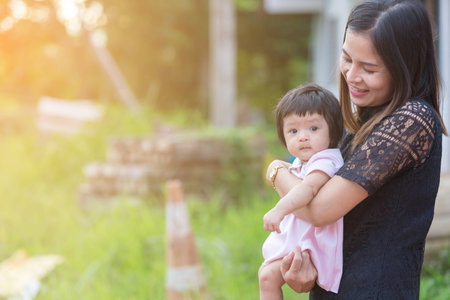Introduction to Baby Car Seat Safety in the UK
Ensuring your baby’s safety on the road is one of the most important responsibilities you have as a parent or carer. In the UK, understanding car seat safety goes beyond simply following laws—it’s about protecting your child as they grow and develop, while adapting to specific local driving conditions and cultural expectations. British roads are often narrow, winding, and can be busy or unpredictable, especially in urban areas. This unique environment makes it essential for families to prioritise safe travel routines from infancy.
Car seat safety matters because babies and young children are particularly vulnerable in road accidents due to their developing bodies and delicate necks and spines. Even minor collisions can have significant consequences if a child is not properly restrained. Establishing secure travel habits early helps children feel safe and confident, while also teaching them about responsible travel as they grow older.
The UK has clear legal requirements regarding child car seats, but these are more than just regulations—they reflect a culture that values prevention and care. By understanding both the letter of the law and the spirit behind it, families can make informed choices that protect their little ones on every journey.
Understanding UK Child Car Seat Laws and Regulations
Ensuring your child’s safety on the road is not just a matter of good parenting—it’s a legal requirement in the UK. Understanding the current legislation around child car seats will help you make informed choices, protect your little one, and avoid penalties. Below, we break down key legal requirements every parent and carer should know.
Legal Requirements for Child Car Seats in the UK
UK law mandates that children must use a child car seat until they are either 12 years old or 135cm tall, whichever comes first. After this, they must use an adult seat belt. The regulations are precise and aim to ensure maximum safety at each stage of your child’s development.
Table: UK Child Car Seat Legislation Overview
| Age/Height | Car Seat Requirement | Additional Notes |
|---|---|---|
| 0–15 months (up to 13kg) |
Rear-facing baby seat | Must be used on front seat only if airbag is deactivated |
| 9 months–4 years (9–18kg) |
Forward or rear-facing child seat (Group 1) | Ensure harness fits snugly across chest and hips |
| Up to 12 years old (or 135cm tall) |
Appropriate child seat or booster seat | Select based on weight and height; check manufacturer guidelines |
| Over 12 years old (or over 135cm tall) |
Adult seat belt | Sit in back seat where possible for added safety |
Penalties for Non-Compliance
If you do not comply with these regulations, you could face a fine of up to £500. More importantly, failing to use the correct car seat puts your child at significant risk of injury. Police carry out spot checks and can issue fixed penalty notices on the spot if your child is not properly secured.
The Importance of Staying Informed
Laws may change as research advances and new safety data emerges. Make it a habit to review government updates or consult with your local council to ensure you’re always up-to-date with the latest requirements. Prioritising this knowledge not only keeps your child safe but also helps foster trust and responsibility within your family dynamic.

3. Choosing the Right Car Seat for Your Child
As your child grows, their developmental needs and safety requirements evolve, making it essential to choose a car seat that is not only age-appropriate but also compliant with UK regulations. Selecting the right car seat involves understanding the different types available and ensuring they align with your child’s weight, height, and stage of development.
Understanding Car Seat Types under British Standards
In the UK, car seats are grouped based on a child’s weight and sometimes height. The two main standards you’ll encounter are ECE R44/04 (weight-based) and i-Size (height-based). Here’s a quick overview:
| Group/Standard | Childs Weight/Height | Approximate Age | Type of Seat |
|---|---|---|---|
| Group 0+ | Up to 13kg | Birth to 12-15 months | Rear-facing infant carrier |
| Group 1 | 9-18kg | 9 months – 4 years | Forward/rear-facing seat with harness |
| Group 2/3 | 15-36kg | 4 – 12 years | High-back booster or booster cushion |
| i-Size | Up to 105cm (usually up to age 4) | Birth – approx. 4 years | Rear-facing (mandatory until at least 15 months), then forward-facing options |
The Importance of Developmental Stages in Car Seat Choice
A child’s physical development significantly influences which car seat is safest for them. For example, infants have delicate neck muscles, so rear-facing seats offer crucial protection during sudden stops or collisions. As children grow and gain head and neck control, they can transition into forward-facing seats or boosters as specified by the guidelines above.
Selecting Based on Fit and Comfort
A well-fitting car seat not only meets legal standards but also supports your child’s comfort—vital for stress-free journeys. Always ensure the harness fits snugly without being restrictive, and check that the seat is compatible with your vehicle model. Many retailers in the UK offer fitting services, giving you peace of mind before setting off on family adventures.
A Gentle Reminder for Parents
Your child’s sense of security starts long before you put the keys in the ignition. Engaging your little one in the process—letting them sit in their new seat or involving them in choosing a colour—can ease transitions between stages. Remember, every milestone brings new opportunities for connection and learning together as you navigate each phase of their growth safely.
4. Safe Installation and Everyday Use
Step-by-Step Guide to Installing Your Baby Car Seat Correctly
Ensuring your child’s car seat is installed correctly is crucial for their safety. Here is a simple step-by-step guide tailored for UK parents:
- Read the Manual: Always begin by thoroughly reading both your vehicle’s manual and the car seat manufacturer’s instructions. Each make and model may have unique requirements.
- Choose the Right Position: The safest place for a baby car seat in British vehicles is typically the rear seat, away from active airbags.
- Secure the Base: If using an ISOFIX system (common in newer UK cars), ensure both connectors click firmly into place and check the indicators for green signals. For seat belt installations, thread the belt through the correct path and lock it tightly.
- Check Angle and Fit: The car seat should be reclined at the appropriate angle—usually around 45 degrees—to support your baby’s head and neck.
- Tighten and Test: Push down firmly on the seat while tightening, then give it a firm shake; it should not move more than 2.5cm in any direction.
Common Mistakes in British Cars
| Mistake | How to Avoid It |
|---|---|
| Incorrect harness height | The harness straps should be at or just below your baby’s shoulders for rear-facing seats. |
| Belt twisted or slack | Straighten out all straps and ensure they are pulled tight with no slack. |
| Using front passenger seat with an active airbag | Avoid placing a rear-facing car seat in front of an active airbag—deactivate it if necessary or use the back seat. |
| Poorly fitted ISOFIX connectors | Always double-check that connectors are clicked in and visual indicators show green. |
| Add-on accessories not approved by the manufacturer | Only use items provided with or recommended by your car seat’s manufacturer to avoid compromising safety. |
Daily Practices for Safe Journeys
- Consistent Checks: Before every journey, confirm that the car seat is still securely fixed, as seats can loosen over time.
- Smooth Harnessing: Place your child in the seat with their back flat against it, buckle up, and ensure you cannot pinch excess strap material at their shoulder.
- Avoid Bulky Clothing: Remove thick coats or snowsuits before strapping your baby in; use blankets over the harness instead during cold British weather.
- Lead by Example: Make buckling up part of your family routine—children learn through watching your consistent habits each day.
The Emotional Connection: Building Trust Through Routine Safety
Your calm, attentive approach to securing your child helps nurture their sense of trust and security. Each time you buckle them in safely, you reinforce a loving message: “You are safe, cared for, and protected.” These daily interactions lay important foundations for emotional development as well as physical wellbeing—making every journey together not just safer, but also more connected.
5. Tips for Parental Peace of Mind and Child Comfort
Reducing Travel Stress: Practical Strategies
Long car journeys with little ones can be daunting, but a few strategies grounded in British family culture can make all the difference. Plan regular breaks at motorway service stations—many in the UK offer child-friendly facilities, baby changing rooms, and even small play areas. Pack familiar snacks, favourite toys, and comfort items like a well-loved blanket or teddy. Maintain a calm tone and positive outlook; children quickly pick up on parental emotions, so your reassurance can help them feel secure.
Encouraging Positive Parent-Child Interaction
The car is an excellent environment for fostering connection and learning. Try these classic UK-inspired games and activities:
| Activity | Description | Benefits |
|---|---|---|
| I Spy | A traditional British game where you take turns spotting objects outside the window | Enhances observation skills and language development |
| Singing Songs | Sing along to nursery rhymes or classic British tunes like “The Wheels on the Bus” | Builds memory, rhythm, and family bonding |
| Storytelling | Create stories together about people or places you pass by during the journey | Sparks imagination and improves communication skills |
Maintaining Your Car Seat for Ongoing Safety
Regular maintenance is crucial for both safety and comfort. In the UK’s often damp climate, check straps and buckles for signs of wear or mildew. Clean the seat covers as per manufacturer instructions—many are machine-washable, which is handy after those inevitable snack-time spills! Always double-check that the car seat remains firmly installed before every trip. Replace seats if they’ve been involved in any accident or show signs of structural damage, in line with UK safety advice.
Quick Car Seat Maintenance Checklist:
- Inspect regularly: Look for frayed straps or loose stitching.
- Clean promptly: Remove crumbs and spills to avoid discomfort or mould.
- Check installation: Ensure the seat remains securely attached to your vehicle.
- Update as needed: Move up to the next seat stage when your child outgrows their current one (as per UK regulations).
A Final Thought on Peaceful Journeys
Caring for your child’s comfort and safety while nurturing positive interactions can transform every journey into a cherished family memory. With thoughtful preparation, routine maintenance, and a dose of classic British fun, you’ll not only comply with UK laws but also build lasting bonds on the road.
6. Resources and Support in the UK
Ensuring your baby’s car seat is installed correctly and meets all UK safety standards can feel overwhelming, especially for new parents. Fortunately, there is a wealth of support available across the UK to help you make informed decisions, gain confidence, and keep your little one safe on every journey. Below, youll find a comprehensive list of local resources, expert services, and avenues for practical help with car seat safety.
Local Resources and Organisations
| Resource/Organisation | Description | Contact/Website |
|---|---|---|
| Child Car Seats (GOV.UK) | The official government guide to car seat laws, types, and fitting advice. | gov.uk/child-car-seats-the-rules |
| RoSPA (Royal Society for the Prevention of Accidents) | Offers detailed guidance, downloadable checklists, and training for car seat safety. | rospa.com/road-safety |
| Good Egg Safety | Provides free car seat clinics across the UK with expert fitting advice and live demonstrations. | goodeggcarsafety.com |
| The Child Accident Prevention Trust (CAPT) | Information on preventing childhood injuries including in-car safety tips. | capt.org.uk |
Expert Advice & Hands-On Support
- Local Council Road Safety Teams: Many councils offer free advice sessions or workshops on car seat fitting. Check your local authority’s website for events in your area.
- Maternity Units & Health Visitors: NHS health visitors often provide information on car seat safety during home visits or antenatal classes. Don’t hesitate to ask them questions specific to your vehicle or child’s needs.
- BABY Shops & Retailers: Reputable retailers such as Mothercare, John Lewis, Halfords, and independent baby stores frequently have trained staff who can demonstrate correct installation or even fit the seat for you at no extra charge.
Online Communities and Helplines
- The NHS Website: Reliable guides on travel safety for children. nhs.uk
- The Lullaby Trust: Covers broader aspects of baby safety including travel. lullabytrust.org.uk
When to Seek Professional Help?
If you are unsure whether your car seat is fitted correctly, if your child seems uncomfortable, or if you have an unusual vehicle setup (such as three seats in a row), it’s always best to seek hands-on support from qualified professionals. Never hesitate to revisit a fitting clinic or consult experts—your peace of mind and your child’s safety are worth it.


